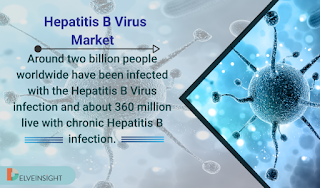Cancer Market
Cancer is a disease that involves an uncontrolled growth
of cells, which leads to tumor formation. Albeit not all tumors are cancer like
benign tumors. The abnormal tumour cells have the propensity to extend to other
local tissues and may also escalate to various parts of the body via blood and
lymphatic system. There are different types of cancers in the cancer market,
such as lung cancer, colorectal, breast cancer, and many others. Cancer
treatment is based on the stages of disease development. Chemotherapy is
utilized for the majority of cases in the earlier stages, whereas other cancer
therapy options like targeted therapy drugs, immunological therapy drugs are
used in the late stage.
Cancer has a global prevalence that has resulted in the
demand for drugs in the cancer market. The main factors, which are responsible
for the growth of the oncology/cancer market are increase in cancer research,
upsurge in geriatric population worldwide, and increase in several
collaborations between pharmaceutical companies. Also, the rise in healthcare
expenditure worldwide is expected to boost cancer market expansion. However,
high cost associated with oncology drug development along with adverse effects
associated with cancer therapeutics is some of the factors that restrain the
cancer market growth. Conversely, the upsurge in demand for personalized
medicine and high potential of developing nations is expected to provide new
opportunities for the cancer market players in future.
·
Drug class type
·
Indication
Based on drug class type, the cancer market is divided
into chemotherapy, targeted therapy, immunotherapy (biologic therapy), hormonal
therapy, and others.
By indication, it is categorized into lung cancer,
stomach cancer, colorectal cancer, breast cancer, prostate cancer, liver
cancer, oesophagus cancer, cervical cancer, kidney cancer, bladder cancer, and
many other cancers.
The cancer market is also segmented
based on
·
Application
·
Top-selling drugs
·
Region.
Based on application, the cancer market is divided into
blood cancer, lung cancer, colorectal cancer, prostate cancer, breast cancer,
cervical cancer, head & neck cancer, glioblastoma, malignant meningioma,
mesothelioma, melanoma, and others.
By top-selling drugs, it is categorized into Revlimid,
Avastin, Herceptin, Rituxan, Opdivo, Gleevec, Velcade, Imbruvica, Ibrance,
Zytiga, Alimta, Xtandi, Tarceva, Perjeta, Temodar, and many others.
By region, Asia-Pacific is expected to witness noticeable
growth shortly. In Asia, China, India, and Japan will continue to be the
fastest-growing cancer markets. The growth in Asia-Pacific cancer market is
expected to be driven by increasing tobacco consumption, growing population,
and increasing disposable income.
Moreover, high cancer market growth potential in
developing nations, rise in several pipeline products, and a rise in demand for
personalized medicines are expected to create new opportunities for the cancer
market players during the forecast period. Though, adverse effects associated
with the use of cancer drugs and high costs related to cancer drug development
are the main factors that halt the growth of the cancer market. Rise in cancer
prevalence, the increase in association between pharmaceutical companies, and
the upsurge in cancer research are the significant factors that elevate the
growth of the cancer therapeutics market. Furthermore, growth in the geriatric
population is expected to boost cancer market growth.


Comments
Post a Comment